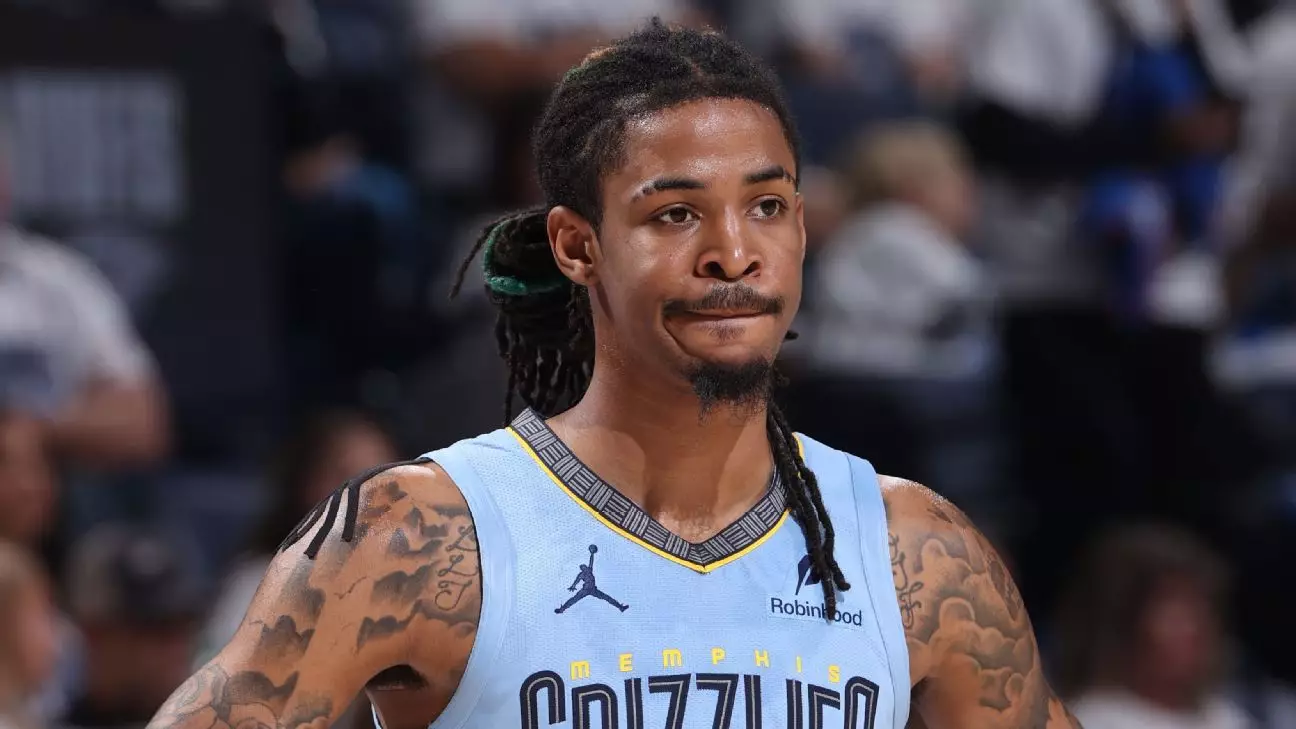In a noteworthy legal case that caught the attention of sports enthusiasts and legal analysts alike, the Memphis basketball scene recently faced a tumultuous storm following allegations against NBA star Ja Morant. The incident stemmed from a pickup basketball game at his parents’ home in July 2022, involving a teenage player, Joshua Holloway, who claimed that Morant assaulted him. However, the Shelby County Circuit Judge Carol Chumney has now dismissed this lawsuit, highlighting the complexities surrounding self-defense claims in civil law.
At the heart of this case lies the age-old debate about aggression, sportsmanship, and the nuances of self-defense. The backdrop was a seemingly casual game, a setting familiar to many athletes that often resolves issues with camaraderie rather than conflict. But when faced with perceived provocation, the line between friendly competition and aggressive confrontation can blur alarmingly.
A Closer Look at the Incident
On the day in question, Holloway, who was just 17 at the time, was invited to engage in a series of pickup games with Morant and others. Tension escalated abruptly when Holloway allegedly threw the basketball at Morant, impacting his face and provoking a defensive reaction from the star player. Morant’s assertion of self-defense has been a critical component of his legal defense strategy, claiming that he felt threatened not just physically but also in terms of his public persona and professional reputation.
The complexity of the case intensifies when analyzing the testimonies presented during the hearings. Morant testified that he was on high alert after being hit and that Holloway’s gestures, including his posturing and clenched fists, signaled an imminent threat. These nuances are vital because they raise questions about what constitutes a legitimate fear in a physical scenario, especially in an environment that should inherently foster teamwork and sportsmanship.
Legal Precedents and Implications
Judge Chumney emphasized that under Tennessee law, Morant was presumed civilly immune due to the nature of self-defense claims. The “stand your ground” law, which is frequently discussed in criminal cases, also became a focal point of this civil case. This case serves as a critical examination of how self-defense is interpreted within the context of sports and personal interactions.
Chumney’s ruling demonstrates a blend of legal reasoning and public policy considerations, indicating that the application of the law must not only focus on the incident but also take into account the responsibilities of public figures. Athletes in the limelight hold a particular social and moral responsibility to model appropriate behavior, especially when young fans closely watch their actions.
Public Figures and Their Role in Society
One of the most compelling aspects of the judge’s ruling was her poignant reminder that both Morant and Holloway, despite this incident, serve as leaders in their respective basketball communities. This acknowledgment raises an important dialogue about how athletes can leverage their influence positively to guide young individuals navigating competitive sports.
The dismissal of the lawsuit emphasizes the necessity for sports figures to exemplify maturity and resolution, particularly when faced with challenging scenarios. The incident reminds us that the pressures of being in the public eye can turn a typical interaction into a sensationalized conflict, drawing public interest and scrutiny.
Looking Ahead: Potential Impact on Sports Culture
Although this case has concluded with Morant’s legal victory, the implications resonate far beyond courtrooms and basketball courts. It invites introspection regarding how aggression is perceived and handled in competitive sports. The Morant-Holloway incident may prompt not only players but also coaches and organizations to reassess how they advocate for respect and responsibility amid fierce competition.
Moreover, as athletes continue to grapple with the demands of their careers, it becomes evident that there exists a need for structured programs focusing on conflict resolution and emotional intelligence in sports. This could potentially reduce incidents driven by miscommunication and misunderstandings—essentially promoting a culture that prioritizes both athletic excellence and personal growth.
Through the lens of this single case, the discussion on sportsmanship, self-defense, and accountability continues to unfold, underscoring the importance of mature responses in the heat of an athletic battle.


Leave a Reply